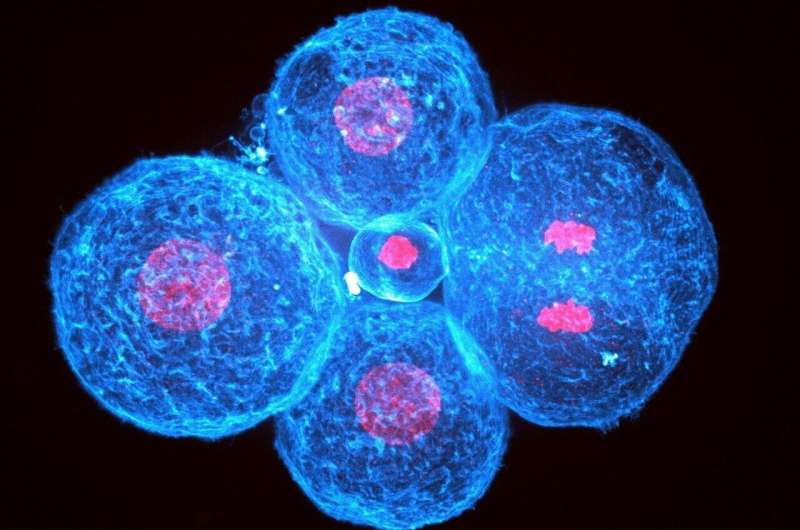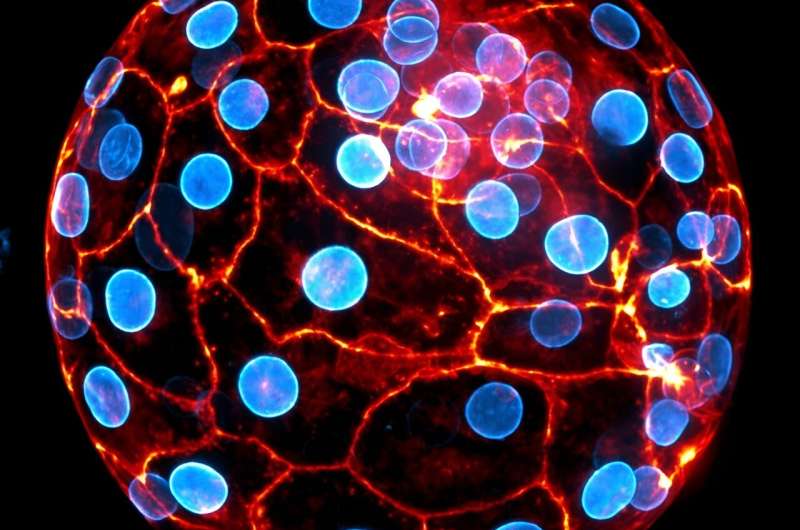This article has been reviewed according to Science X's editorial process and policies. Editors have highlighted the following attributes while ensuring the content's credibility:
fact-checked
peer-reviewed publication
trusted source
proofread
Cell contraction drives the initial shaping of human embryos, study finds

Human embryo compaction, an essential step in the first days of an embryo's development, is driven by the contractility of its cells. This is the finding of a team of scientists from CNRS, Institut Curie, Inserm, AP-HP and the Collège de France. Published in the journal Nature, these results contradict the presupposed driving role of cell adhesion in this phenomenon and pave the way for improved assisted reproductive technology (ART).
In humans, embryonic cell compaction is a crucial step in the normal development of an embryo. Four days after fertilization, cells move closer together to give the embryo its initial shape. Defective compaction prevents the formation of the structure that ensures the embryo can implant in the uterus. In assisted reproductive technology (ART), this stage is carefully monitored before an embryo is implanted.
An interdisciplinary research team led by scientists at the Genetics and Developmental Biology Unit at the Institut Curie (CNRS/Inserm/Institut Curie) studying the mechanisms at play in this still little-known phenomenon has made a surprising discovery: human embryo compaction is driven by the contraction of embryonic cells.
Compaction problems are therefore due to faulty contractility in these cells, and not a lack of adhesion between them, as was previously assumed. This mechanism had already been identified in flies, zebrafish and mice, but is a first in humans.

By improving our understanding of the early stages of human embryonic development, the research team hopes to contribute to the refinement of ART as nearly one-third of inseminations are unsuccessful today.
The results were obtained by mapping cell surface tensions in human embryonic cells. The scientists also tested the effects of inhibiting contractility and cell adhesion and analyzed the mechanical signature of embryonic cells with defective contractility.
More information: Jean-Léon Maître, Mechanics of human embryo compaction, Nature (2024). DOI: 10.1038/s41586-024-07351-x. www.nature.com/articles/s41586-024-07351-x
Journal information: Nature
Provided by CNRS



















